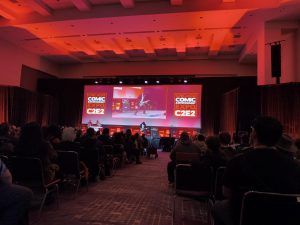The Online Educational Model
February 8, 2013
– [post-date] –
For the first time in US history, student debt has surpassed credit card debt and reached one trillion dollars. It created social unrest when it became one of the most prominent concerns expressed by those involved in the Occupy movement. Big banks are profiting off of student debt but our future generations, their career hopes chained up to fiscal slavery, are demanding access to affordable, good quality education.
Increasingly, online education is being cited as a key component of any solution to this problem. The Oct. 29, 2012 issue of Time magazine listed Udacity, Coursera and EDX as three companies that, together, offer online college education to an international 2.15-million-strong student body for free. It is expected that this may change in the future, but the fees are expected to remain negligible.
The MOOC (Massive Open Online Course) trend appears to be gaining ground after Stanford professor Sebastian Thrun, CEO and co-founder of Udacity, developed an interactive, efficient online classroom where students were found to learn more than those taking classes in person. He did this using teaching methods that implement what we know from extensive research about how the brain learns.
In addition to the success of Udacity and similar models, there have been numerous studies that document successful interactive learning online (ILO) models. A study by Ithaka S+R, a non-profit agency devoted to furthering online education, titled Interactive Learning Online at Public Universities: Evidence from Randomized Trials, compared ILO with traditional classroom-based learning (CBL) and found that there was no statistically significant difference in outcomes for students.
The Bottom Line Benefits
As a business model, online universities offer minimized need for brick-and-mortar buildings, courses that have a very low cost to produce, an international reach, and since lectures are recorded the professors put in less work and less time to reach more students. For students, the trend offers lowered tuition costs and, perhaps as importantly, the virtual global campus ushers a new era that promises the democratization of educational opportunities.
Accreditation
Udacity is not yet nationally accredited but, through a partnership with some conventional schools, Udacity students are able to pay a fee to take their final exams at independent testing sites and gain college credit for it. However, even without traditional college accreditation, the success of Udacity is secured as many employers are already beginning to hire Udacity students directly, particularly for positions that require skills that are in high demand, many of them in the computer science field.
Implementing ILO at Northeastern Illionois University (NEIU)
NEIU professor Mary Ellen McGoey started doing online courses at the 300-level about five years ago and has continued to do one every semester ever since, expanding into 100- and 200-level French courses. “For the most part, students at NEIU take online courses first and foremost for convenience. Most work and have family responsibilities so they truly appreciate the flexibility online courses offer. Some reasons that have been mentioned by students for taking online include the birth of a new baby, full-time jobs which make it very difficult to attend on-campus courses, desire to complete their last course at NEIU the most convenient way possible, sudden moves to other parts of the country, etc. As is the case with most students who take online courses nationwide, 80 percent or more also take courses on campus,” she said.
Professor McGoey took it upon herself to learn the computer technology required to construct a more efficient virtual classroom, although she says NEIU already has the beginnings of one (Blackboard). This was a time consuming process, and she had to invest some money herself in the software, but “more and more instructors beginning to get interested and willing to commit the time needed to give online a try.”
When asked about Udacity and their partnership with conventional universities that offer credit by proctoring an exam for a fee, and whether that model may be implemented locally, Brad Baker, Assistant to the Provost said that NEIU is not likely to proctor MOOC exams from competing online universities saying “that’s kind of where we are. We’re not gonna be an online university but use the online tools when they enhance learning and make sense.”
He cited a 2012 ECAR (Educause Center for Applied Research) Study of Undergraduate Students and Information Technology that mirrored the results of the Ithaka S+R study, reporting that 70 percent of students indicated that they learn best in blended learning environments such as are found in hybrid courses. He added, “this semester, Spring 2013, there are 41 fully online class sections being offered and 74 hybrid class sections. So far, 175 NEIU faculty members have completed a four-week program offered by the CTL called Online Teaching I.”








